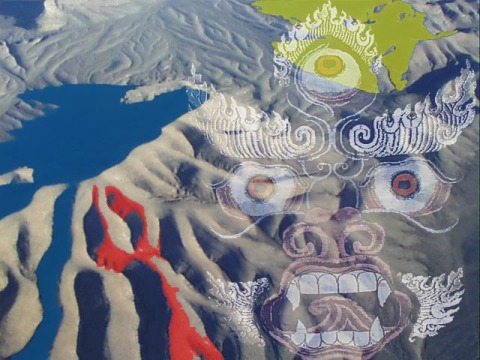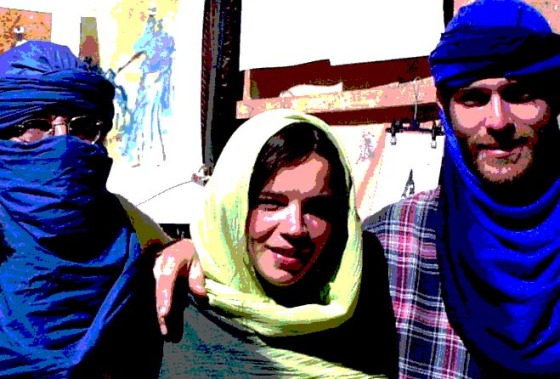direct
ever changing impermanent reality truth
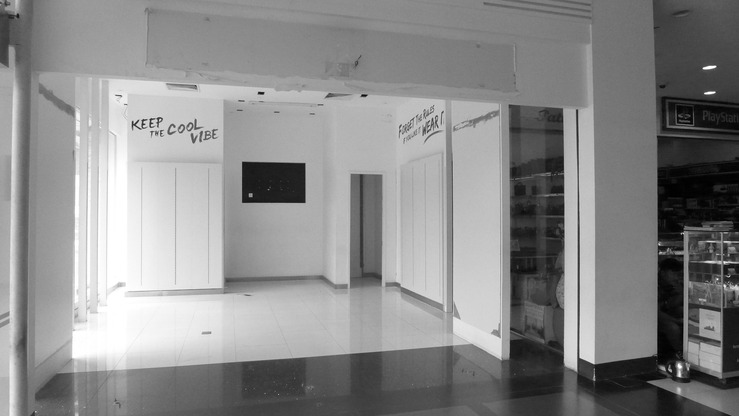
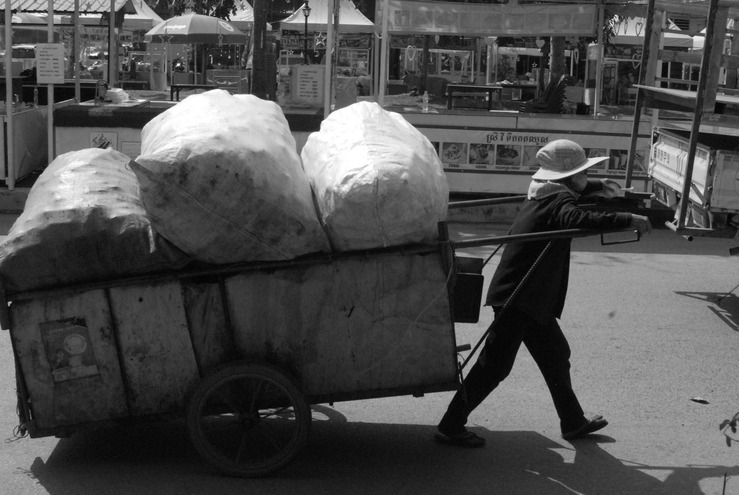
path of awakening is simple & direct
but steep and difficult
as we journey from ego to self

ever changing impermanent reality truth


path of awakening is simple & direct
but steep and difficult
as we journey from ego to self

In Ankara and elsewhere Lucky suggested to students they pay attention.
Many were too poor to pay attention, pay themselves first, or practice meditation calming their tortured heart-minds.
“Feel light about it, let go of your fragile ego. Fried ego is dust floating on the fluid of your eyes.”
Some released expectations. Others relaxed from grasping imaginary fears perceived as reality.
Reality is a crutch, or as Freedom said to his once-in-a-lifetime paramour, a crotch. So-called reality is a crock of shit said a passive girl getting a leg up. Hurry and finish money said to time. Take your time didn’t listen.
Other, acknowledging deeper emotional feelings, sensing heart’s wisdom-mind of intent practiced simplicity, serenity and compassion with gratitude.

A Zen monk related a story.
“Before becoming a monk I was an English teacher in an Experimental High School near Chengdu in Southwestern China. One day I held up a walnut.
“What is this?”
They answered in Chinese.
I wrote “walnut” and “metaphor” on the board.
“This walnut is like a person I know, very hard on the outside. They are very safe and secure inside their shell. Nothing can happen to them. What is inside this shell?”
“Some food,” said a boy.
“How do you know?”
“My mother told me.”
“Do you believe everything your mother tells you?”
“Yes, my mother always tells the truth.”
“Really?”
“Yes.”
“Well, that’s good, but I wonder if mothers always tell their children the truth. Why? Because mothers and fathers like to protect their children and keep them safe. Especially young children. Now you are in high school and developing as a more complete and mature human being. It’s good to question things and find out the truth for yourself. Do you understand?”
Some said “yes,” others nodded passively.
“This walnut is a metaphor for the self. A symbol. The self that is afraid to take risks because they are “protected” by their shell. Maybe the reality is that the shell is empty. How do we really know what is inside.”
“It’s a mystery,” said another boy.
“That’s right, it’s a mystery. How will we find out what’s inside?”
“You have to break it open,” said a boy with poetic aspirations.
“Yes, you or I will have to break open the shell, our shell, break free from the shell to know what is inside. That can be a little scary when we are conditioned and comfortable carrying around the shell every day isn’t it?”
“It’s our self,” whispered a girl in the front row.
“Very good. Exactly. It’s our self, this shell and the mystery. We have to take risks and know nothing terrible is going to happen, like trying to speak English in class.”
“If we don’t break the shell we’ll never feel anything,” said another boy.
A girl in the back of the room said, “it means it’s hard to open our heart. It’s hard to know another person and what they are thinking, how they are feeling.”
“You got it,” I said. “We’ll never experience all the feelings of joy, love, pain, sorrow, or friendship and miss out on life.”
This idea floated around the room as I juggled the shell in my hand.
“I know people who grow very tired every day from putting on their shell before they leave home. It gets heavier and heavier, day by day. Some even carry their shell into adulthood. They look alive but inside they are dead. But eventually, maybe, something important happens to them at the heart-mind level and they decide to break free from their shell and see what’s inside. They say to themselves, ‘This shell is getting really heavy and I’m so tired of putting it on and carrying it around. I’m going to risk it.’”
I smashed the shell on the table with my hand. It splintered into pieces. Students jumped with shock.
“There, I’ve done it! I smashed my shell. Can it be put back together?”
“No,” they said.
“Right, it’s changed forever. The shell is gone.”
I fingered small pieces of shell, removing them from the nut.
“See, it’s ok. Wow! Now it’s just an old useless shell. It doesn’t exist anymore. It’s history. I know it will take time to remove pieces of my old shell. Maybe it’s fair and accurate to say the old parts represent my old habits, behaviors, and attitudes. It happened and now I will make choices using my free will accepting responsibility for my actions and behavior. And, I know nothing terrible will happen to me. I feel lighter. Now I can be real.
“That’s the walnut story.”
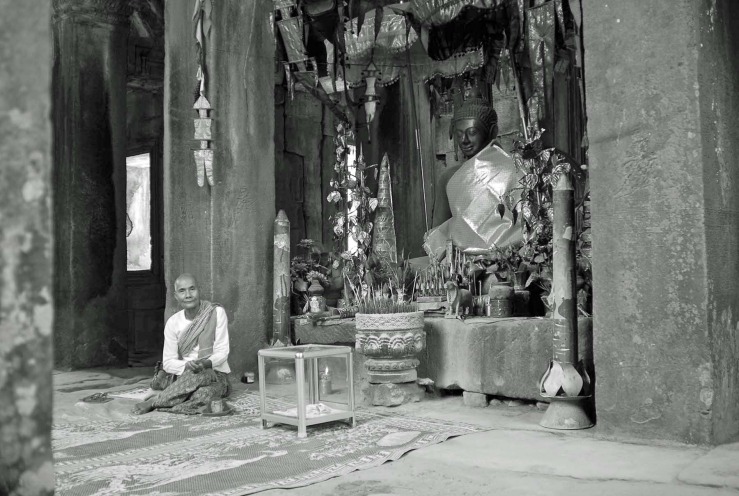
After climbing Qinchengshan mountain in western Sichuan where Taoism began 2,000 years ago he introduced meditation concepts to his Grade 8 Chinese students.
“Mediation is sitting quietly to develop a calm mind,” he said.
“You sit tall with your hands on your knees, gently lower your eyes and focus on a single breath, ‘in, out, in, out.’
“If your mind becomes distracted by past or future thoughts you bring it back to your breath, ‘in, out, in out.’ Your single point of awareness. Be your breath. Do it for yourself. Not your friends, parents or teachers. Meditation allows you feel a harmony and balance.
"You will feel more peaceful and happier than other people busy rushing around. Your goal today is just to sit for five minutes. Sit and practice for five minutes every day before school. Eventually you may want to sit for twenty minutes every day, whenever and wherever you like.”
He wrote Chinese words on the board. Jing — quiet, stillness, calm, and Ding — concentration and focus - so they’d see the linguistic connection in Mandarin.
“When you begin to sit in meditation your mind will be very uncooperative. The ego or emotional mind will fight against it’s extinction by the higher forces of spiritual awareness. The ego loves the day-to-day circus of sensory entertainment and emotional turmoil. This game depletes your energy, degenerates your body and exhausts your spirit. We call the ego the monkey mind.”
They laughed.
“When your mind is calm and focused in the present it is neither reacting to past memories or preoccupied with future plans. No regrets, no fears. These are two major sources of chronic or long term health problems. People suffer because their monkey mind is busy regretting the past or afraid of the future and it drives them crazy, this little monkey. Do you want to try it?”
“Yes.”
“Great! No books, papers and pens. If you don’t want to try it, it’s ok. Please just sit quietly respecting others sitting in meditation. See how it feels. Let’s begin. Adjust your posture with shoulders back. Relax. Focus on your breath, ‘in, out, in, out.’ He dimmed the lights.
After five minutes he rang small Tibetan bells.
“How did it feel?”
“Beautiful,” said a girl. “I was flying.”

Namaste,
They needed masks.
They needed to understand the underlying unconscious animist mysteries inside their masks of death. They confronted the realm of spirit. They bought masks in open air markets on their pilgrimage, masks signifying the dignity of their Being, thwarting demons, Being demons and ghosts dancing in light.
It was all light in their shamanistic interior landscape. They learned to let go of the ego, detach from outcomes, eliminate the need to control, trust their spirit energies and remain light about it.
Inside light with slow fingers and long thin ivory nails they turned clay into pots. Spinning circles danced turning on a Wheel of Time.
They finished throwing them, used them for tribal ceremonies and smashed delicate clay pots to earth. They exploded into air creating volcanic ash coating everything in a fine dust.
Metta.
